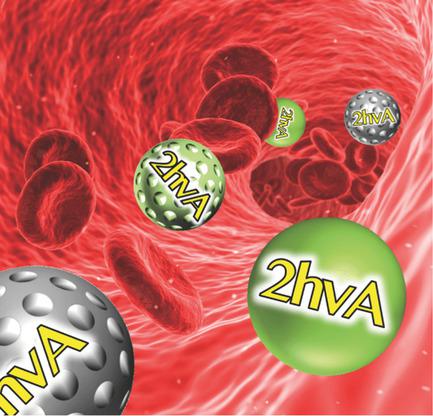当前位置:
X-MOL 学术
›
Adv. Healthcare Mater.
›
论文详情
Our official English website, www.x-mol.net, welcomes your
feedback! (Note: you will need to create a separate account there.)
Two‐Photon‐Excited Silica and Organosilica Nanoparticles for Spatiotemporal Cancer Treatment
Advanced Healthcare Materials ( IF 10.0 ) Pub Date : 2018-01-18 , DOI: 10.1002/adhm.201701248 Jonas G. Croissant 1, 2 , Jeffrey I. Zink 3 , Laurence Raehm 4 , Jean-Olivier Durand 4
Advanced Healthcare Materials ( IF 10.0 ) Pub Date : 2018-01-18 , DOI: 10.1002/adhm.201701248 Jonas G. Croissant 1, 2 , Jeffrey I. Zink 3 , Laurence Raehm 4 , Jean-Olivier Durand 4
Affiliation

|
Coherent two‐photon‐excited (TPE) therapy in the near‐infrared (NIR) provides safer cancer treatments than current therapies lacking spatial and temporal selectivities because it is characterized by a 3D spatial resolution of 1 µm3 and very low scattering. In this review, the principle of TPE and its significance in combination with organosilica nanoparticles (NPs) are introduced and then studies involving the design of pioneering TPE‐NIR organosilica nanomaterials are discussed for bioimaging, drug delivery, and photodynamic therapy. Organosilica nanoparticles and their rich and well‐established chemistry, tunable composition, porosity, size, and morphology provide ideal platforms for minimal side‐effect therapies via TPE‐NIR. Mesoporous silica and organosilica nanoparticles endowed with high surface areas can be functionalized to carry hydrophobic and biologically unstable two‐photon absorbers for drug delivery and diagnosis. Currently, most light‐actuated clinical therapeutic applications with NPs involve photodynamic therapy by singlet oxygen generation, but low photosensitizing efficiencies, tumor resistance, and lack of spatial resolution limit their applicability. On the contrary, higher photosensitizing yields, versatile therapies, and a unique spatial resolution are available with engineered two‐photon‐sensitive organosilica particles that selectively impact tumors while healthy tissues remain untouched. Patients suffering pathologies such as retinoblastoma, breast, and skin cancers will greatly benefit from TPE‐NIR ultrasensitive diagnosis and therapy.
中文翻译:

双光子激发二氧化硅和有机硅纳米粒子用于时空癌症治疗
相较于目前缺乏时空选择性的疗法,近红外(NIR)相干双光子激发(TPE)治疗可提供更安全的癌症治疗,因为其3D空间分辨率为1 µm 3而且散射很低。在这篇综述中,介绍了TPE的原理及其与有机硅纳米颗粒(NPs)结合的意义,然后讨论了涉及开拓性TPE-NIR有机硅纳米材料设计的研究,用于生物成像,药物递送和光动力疗法。有机硅纳米颗粒及其丰富而完善的化学性质,可调的组成,孔隙率,大小和形态为通过TPE-NIR进行最小的副作用治疗提供了理想的平台。具有高表面积的中孔二氧化硅和有机二氧化硅纳米粒子可以进行功能化,以携带疏水性和生物学上不稳定的双光子吸收剂进行药物递送和诊断。目前,大多数使用NP的光驱动临床治疗应用都涉及通过产生单线态氧的光动力疗法,但是低的光敏效率,抗肿瘤性和缺乏空间分辨率限制了它们的适用性。相反,工程化的两光子敏感有机硅颗粒可提供更高的光敏产率,多功能疗法和独特的空间分辨率,这些有机硅颗粒可选择性地影响肿瘤,而健康组织却不受其影响。患有视网膜母细胞瘤,乳腺癌和皮肤癌等病理的患者将从TPE-NIR超灵敏诊断和治疗中受益匪浅。
更新日期:2018-01-18
中文翻译:

双光子激发二氧化硅和有机硅纳米粒子用于时空癌症治疗
相较于目前缺乏时空选择性的疗法,近红外(NIR)相干双光子激发(TPE)治疗可提供更安全的癌症治疗,因为其3D空间分辨率为1 µm 3而且散射很低。在这篇综述中,介绍了TPE的原理及其与有机硅纳米颗粒(NPs)结合的意义,然后讨论了涉及开拓性TPE-NIR有机硅纳米材料设计的研究,用于生物成像,药物递送和光动力疗法。有机硅纳米颗粒及其丰富而完善的化学性质,可调的组成,孔隙率,大小和形态为通过TPE-NIR进行最小的副作用治疗提供了理想的平台。具有高表面积的中孔二氧化硅和有机二氧化硅纳米粒子可以进行功能化,以携带疏水性和生物学上不稳定的双光子吸收剂进行药物递送和诊断。目前,大多数使用NP的光驱动临床治疗应用都涉及通过产生单线态氧的光动力疗法,但是低的光敏效率,抗肿瘤性和缺乏空间分辨率限制了它们的适用性。相反,工程化的两光子敏感有机硅颗粒可提供更高的光敏产率,多功能疗法和独特的空间分辨率,这些有机硅颗粒可选择性地影响肿瘤,而健康组织却不受其影响。患有视网膜母细胞瘤,乳腺癌和皮肤癌等病理的患者将从TPE-NIR超灵敏诊断和治疗中受益匪浅。











































 京公网安备 11010802027423号
京公网安备 11010802027423号